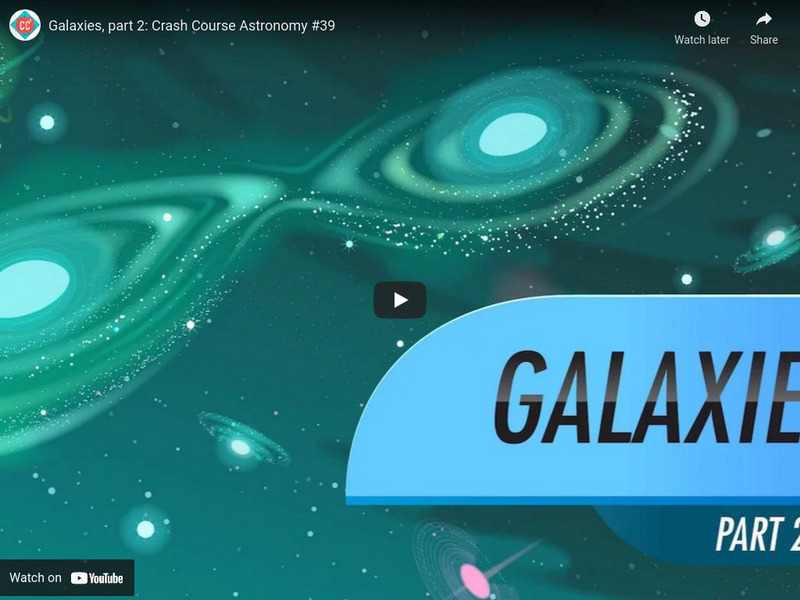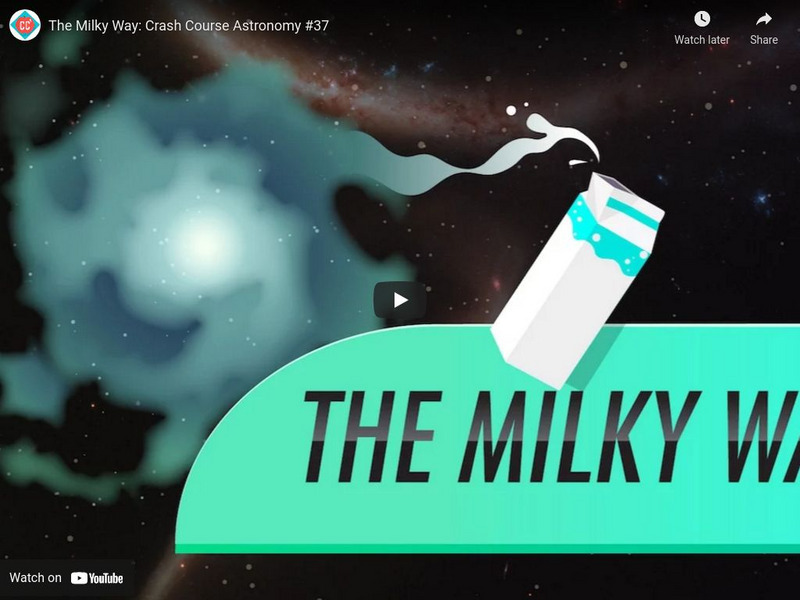Getty Images
Night Sky Star Trail Time Lapse Background. Star trails in night sky
Night Sky Star Trail Time Lapse Background. Star trails in night sky
NASA
Science at Nasa: Science Casts: Amateur Scientists Discover Galactic Bubbles
Amateur scientists have made an effervescent discovery: The Milky Way Galaxy is bubbling like a glass of champagne. [3:25]
PBS
Pbs Learning Media: Crash Course Astronomy: Galaxies, Part 2
Active galaxies pour out lots of energy, due to their central supermassive black holes gobbling down matter. Galaxies tend not to be loners, but instead exist in smaller groups and larger clusters. Our Milky Way is part of the Local...
PBS
Pbs Learning Media: Crash Course Astronomy: The Milky Way
Today we're talking about our galactic neighborhood: The Milky Way. It's a disk galaxy, a collection of dust, gas, and hundreds of billions of stars, with the Sun located about halfway out from the center. [10:59]
PBS
Pbs Learning Media: Crash Course Astronomy: Introduction to Astronomy
Host Phil Plait explains the nature and origins of the field of astronomy. Learn how ancient humans observed the sky and associated the patterns they found there with farming and the seasons on Earth. Early astronomers developed an...
Science Friday Initiative
Science Friday: Ibex Spacecraft Intercepts "Alien" Particles
A discussion of the research being conducted by NASA's Interstellar Boundary Explorer. The IBEX has detected interstellar particles that give clues as to the composition of the Milky Way. Aired Feb. 3, 2012 [12:15 min]
Crash Course
Crash Course Astronomy #39: Galaxies, Part 2
Active galaxies pour out lots of energy, due to their central supermassive black holes gobbling down matter. Galaxies tend not to be loners, but instead exist in smaller groups and larger clusters. Our Milky Way is part of the Local...
Crash Course
Crash Course Astronomy #38: Galaxies, Part 1
The Milky Way is our neighborhood in the universe. It's a galaxy and there are many others out there. Galaxies contain gas, dust, and billions of stars or more. They come in four main shapes: elliptical, spiral, peculiar, and irregular....
SciShow
Sci Show Kids: What Is the Milky Way
A video exploring what makes up the Milky Way galaxy. Understand how you can see part of the Milky Way by looking up into the night sky! [3:09]
Crash Course
Crash Course Astronomy #37: The Milky Way
Today we're talking about our galactic neighborhood: The Milky Way. It's a disk galaxy, a collection of dust, gas, and hundreds of billions of stars, with the Sun located about halfway out from the center. [2:35]
Crash Course
Crash Course Big History #202: Why Star Stuff Matters
This video explains the Big Bang Theory including a time line for formation of carbon and its importance.
Khan Academy
Khan Academy: Quasars and Galactive Collisions: Galactic Collisions
Collision of the Milky Way Galaxy with Andromeda (forming "Milkomeda") is featured in this video. [3:34]
PBS
Pbs Learning Media: What Is the Solar System?
The solar system can be intimidating to study due to its vast size. This video is helpful in understanding patterns of the universe. Detailed background information on the formation of the solar system is included, as well as teaching...
Science Friday Initiative
Science Friday: New Milky Way Measurements
The Milky Way galaxy is bigger, heavier, and faster-spinning than researchers once thought.
Science Friday Initiative
Science Friday: What Happens When Two Galaxies Collide?
Astronomers say the Andromeda and Milky Way galaxies will collide in four billion years.
Bozeman Science
Bozeman Science: The Universe & Its Stars
Paul Andersen describes our place on the Earth in the Solar System within the Milky Way Galaxy in the Universe. The make-up and origins of the Universe are included along with stellar evolution. A teaching progression K-12 is also included.











